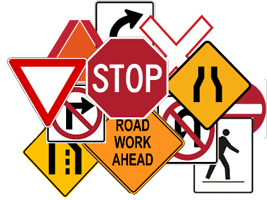
The roads were not similar as one was less used and so had more grass and seemed less used than the other. He saw two paths diverging from a fork in the road and disappearing in the undergrowth. What is a wood? What did the narrator see in the wood? Were the paths similar? Wood means a forest. The poet decides to take the less frequented road.
#THE ROAD NOT TAKEN QUESTIONS MULTIPLE CHOICE FULL#
While one of the roads is the more frequented and easy, the other is less travelled and full of challenges. Both the roads are equally attractive and inviting. He comes to a fork in the woods and does not know which path to take.

What is the setting of the poem? The setting of the poem is a wood where the poet, Robert Frost, has gone for a walk. What is the tone of the poet in the last stanza? The poet adopts a reflective tone in the last stanza. Which poetic device defines the roads in the wood? A metaphor has been used to define the two roads in the wood. What is the theme of the poem? The theme of the poem is the various problems we face in life and the choices we make. What did the poet wish to do when he takes the road that he has not been able to do? The poet wanted to come back and take the other road. Why does the narrator say, "And that has made all the difference"? The narrator said that later in life he shall be retrospectively telling people how his life has been different due to the choices he had made long ago. What will the narrator tell "with a sigh"? The narrator will tell about the fork that he had come to in the woods and the choice he had to make the fact that he had taken the road less frequented by people. Why was the narrator sorry? The narrator was sorry because he could not travel both roads. Where is the narrator standing? The narrator is standing at a place where the road forked into two. Why do you think the poet says this "with a sigh"? The poet is regretful he could not return and take the.road he had left behind to travel on another day. When will the poet look back on his life? The poet would look back on his life after a very long time - when he is an old man. Which road did the poet leave? The poet left the road on which most people travelled. What made the narrator doubt whether he "should ever come back"? The fact that one road generally leads to another made the narrator doubt that he should ever come back. Explain the line "In leaves no step had trodden back".Īnswer: The given line means a path not commonly used so the dried leaves that lay on the ground and had not been trampled upon. What does "both" refer to? In the given lines "both" refers to the two roads that forked out in different directions.

Explain "grassy and wanted wear"? The road was covered with grass as not many people had walked this road so it was more inviting.

Which road did the narrator choose? The narrator chose the one that was grassy and less travelled upon. What does "other" refer to in the above lines? In the above lines, "other" refers to the road that was grassy and less travelled upon.


 0 kommentar(er)
0 kommentar(er)
